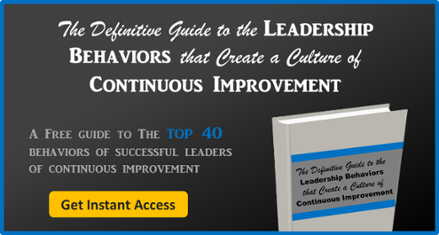 I’m looking out of my window at the grapefruit tree in my back yard. The tree looks kind of funny right now because all of the fruit I can reach has been picked. If you didn’t know better, you’d think that grapefruit only grew on the top half of the tree.
I’m looking out of my window at the grapefruit tree in my back yard. The tree looks kind of funny right now because all of the fruit I can reach has been picked. If you didn’t know better, you’d think that grapefruit only grew on the top half of the tree.
I’ve had more than enough to fulfill my grapefruit cravings, but if I don’t eventually drag the ladder out and pick the rest, they’ll fall out of the tree and rot on my lawn. I’ll have a mess and a wasted opportunity to enjoy or share the fruit.
From what we hear, many companies take a “low hanging fruit” approach to their continuous improvement process. What is easy, cheap and obvious gets done. The more challenging, harder to see opportunities for improvement are left to fester. Don't let this happen in your organization. Here are a few tips if you are ready to drag the ladder out to the tree, so to speak.
Question Assumptions
Continuous improvement is often associated with process improvement, but not all processes deserve to be improved. Before focusing on making every process efficient, make sure every process is necessary. Perhaps some processes can be eliminated, while others can only be improved with a radical redesign. Make sure you're doing what your customer values. Everything else is up for debate, low hanging or not.
Deploy the 5 Whys
5 Whys is a technique used to help get to the root cause (or causes) of problems. It involves starting with a problem and asking, "Why?" until the core issue is revealed. It turns out that this often takes 5 iterations (sometimes less, sometimes more).
Here’s a very basic example.
We received a bad online review.
Why? The customer is unhappy.
Why? She received the wrong item.
Why? The wrong item was entered into the ERP system.
Why? The customer service representative did not know the correct item number.
Why? He was not properly trained.
When using the 5 Whys, keep in mind that you are looking for a failed process, not a person who has failed. In this case, the training process should now become the target of improvement. Why was the training not properly done? We could keep asking why until we get to things that can be improved. We can't blame the customer service rep for not knowing what to do.
Assess the Culture
If your continuous improvement process seems to be stalled, it is a good idea to examine how company culture might be playing a role. Consider whether employees have the right tools and training to support improvement. Determine if executive leaders are setting a good example and continually reinforcing the importance of improvement. Often, the culprit of decelerating improvement initiatives is the failure to recognize employees who are creating positive change.
Continuous improvement requires continuous attention to improvement. From time to time, it is necessary to look at the situation from a different point of view and try a different tactic or two. Perhaps these will help keep your improvement efforts from withering on the vine.



Add a Comment